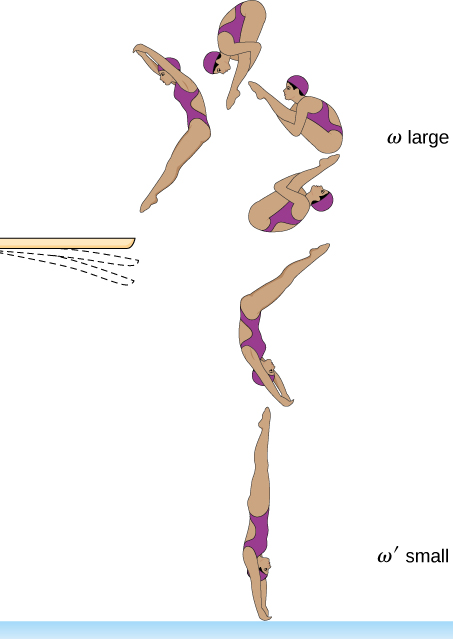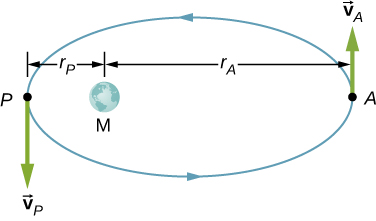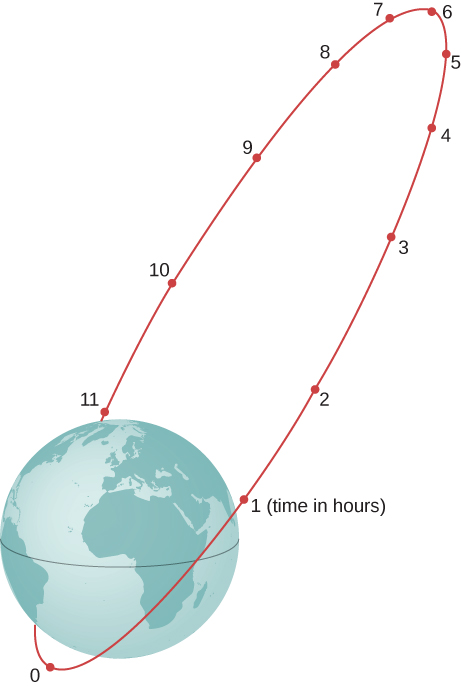| << Chapter < Page | Chapter >> Page > |
As the rope of a tethered ball winds around a pole, what happens to the angular velocity of the ball?
The angular velocity increases because the moment of inertia is decreasing.
Suppose the polar ice sheets broke free and floated toward Earth’s equator without melting. What would happen to Earth’s angular velocity?
Explain why stars spin faster when they collapse.
More mass is concentrated near the rotational axis, which decreases the moment of inertia causing the star to increase its angular velocity.
Competitive divers pull their limbs in and curl up their bodies when they do flips. Just before entering the water, they fully extend their limbs to enter straight down (see below). Explain the effect of both actions on their angular velocities. Also explain the effect on their angular momentum.

A disk of mass 2.0 kg and radius 60 cm with a small mass of 0.05 kg attached at the edge is rotating at 2.0 rev/s. The small mass suddenly separates from the disk. What is the disk’s final rotation rate?
The Sun’s mass is its radius is and it has a rotational period of approximately 28 days. If the Sun should collapse into a white dwarf of radius what would its period be if no mass were ejected and a sphere of uniform density can model the Sun both before and after?
,
A cylinder with rotational inertia rotates clockwise about a vertical axis through its center with angular speed A second cylinder with rotational inertia rotates counterclockwise about the same axis with angular speed . If the cylinders couple so they have the same rotational axis what is the angular speed of the combination? What percentage of the original kinetic energy is lost to friction?
A diver off the high board imparts an initial rotation with his body fully extended before going into a tuck and executing three back somersaults before hitting the water. If his moment of inertia before the tuck is and after the tuck during the somersaults is , what rotation rate must he impart to his body directly off the board and before the tuck if he takes 1.4 s to execute the somersaults before hitting the water?
An Earth satellite has its apogee at 2500 km above the surface of Earth and perigee at 500 km above the surface of Earth. At apogee its speed is 730 m/s. What is its speed at perigee? Earth’s radius is 6370 km (see below).

A Molniya orbit is a highly eccentric orbit of a communication satellite so as to provide continuous communications coverage for Scandinavian countries and adjacent Russia. The orbit is positioned so that these countries have the satellite in view for extended periods in time (see below). If a satellite in such an orbit has an apogee at 40,000.0 km as measured from the center of Earth and a velocity of 3.0 km/s, what would be its velocity at perigee measured at 200.0 km altitude?


Notification Switch
Would you like to follow the 'University physics volume 1' conversation and receive update notifications?